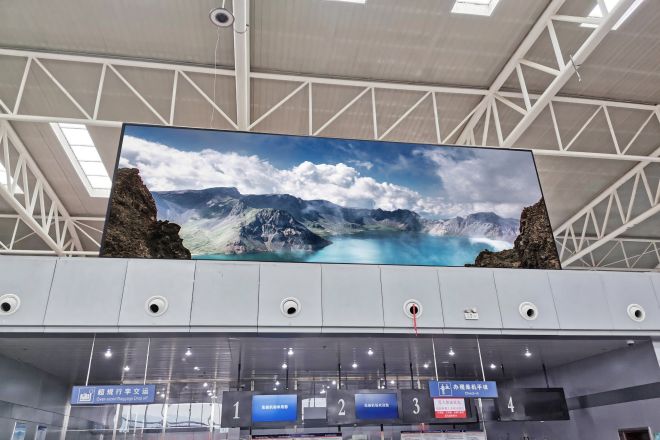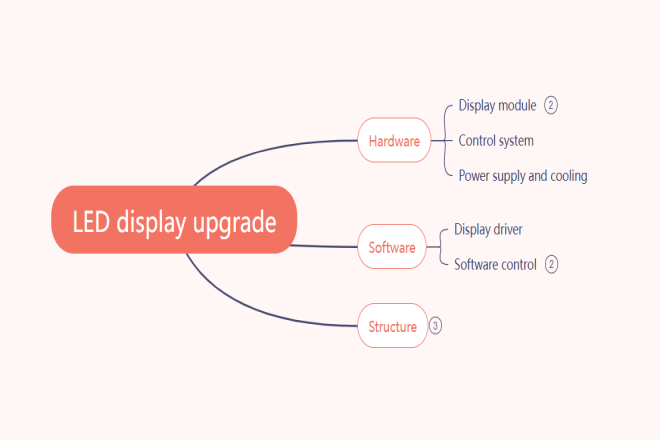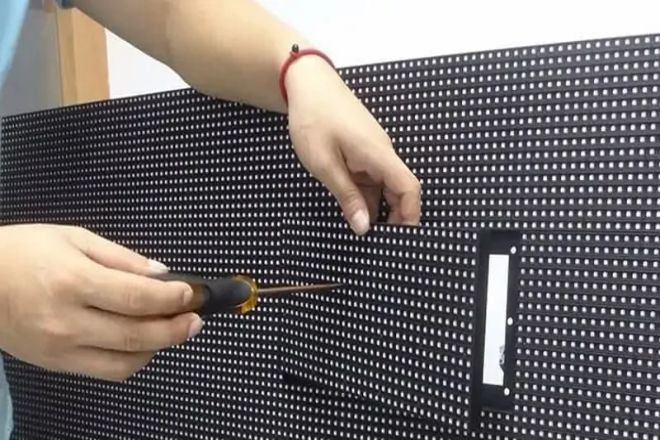Introduction

In today’s information age, LED displays have become an important part of our daily lives and work. Whether in large billboards, shopping malls, stadiums, or conference rooms, LED displays provide us with rich visual information, which profoundly affects the way we live and work.
However, with the continuous advancement of technology, LED displays also need to keep pace with the times and make necessary upgrades. So, when is it time to upgrade? In this article, we will discuss this issue together.
1. What are the main aspects of upgrading LED display screens?

The upgrade of LED display screens mainly involves three aspects: hardware, software, and structure.
1). Hardware upgrade:
Display module:
This is the main part of the LED display and is responsible for displaying images. If the display module is aged or damaged, it will need to be replaced with a new one.
In addition, if the existing display module has a low resolution and cannot meet the new display requirements, it will also need to be upgraded to a higher-resolution module.
Control system:
The control system is the brain of the LED display and is responsible for receiving and sending image signals. If the control system fails or its performance is insufficient, it will also affect the normal operation of the display.
Control system upgrades will involve replacing more advanced controllers and receiving cards to improve signal processing capabilities and stability.
Power supply and cooling system:
The power supply and cooling system of the LED display are crucial to ensure the stable operation of the display.
Upgrading the power supply and cooling system may include replacing a more efficient power supply, adding cooling fans, or improving the cooling structure.
2). software upgrade:
Display driver:
LED displays require specialized drivers to control display effects. As the operating system is updated, the original driver may no longer be compatible or have insufficient performance and needs to be upgraded to a new driver.
Control software:
Control software is the software used to set up and adjust the LED display. By upgrading the control software, you can achieve more precise control of the display, such as adjusting brightness, contrast, color, and other parameters or adding new display functions.
When upgrading the LED display screen, you need to consider compatibility with the original system and ensure the safety and reliability of the upgrade process.
At the same time, a reasonable upgrade plan is formulated based on actual needs and budget to achieve the best display effect and performance.
3). Structural upgrade:
Structural upgrades involve the physical structure, appearance, and fixation methods of the LED display.
With the development of technology and the update of design concepts, the structure of the display screen also needs to be adjusted and optimized accordingly to meet new display needs and usage scenarios.
For example, modern LED displays tend to be thin, flexible, and customizable, which requires their structures to be redesigned and optimized to adapt to these new features.
2.Three major reasons why LED displays need to be upgraded

- Whether it meets market industry standards:
With the continuous advancement of technology, industry standards, and specifications are also constantly updated. If the existing LED display screen does not meet the new market industry standards, such as brightness, color, contrast, etc., then it needs to be upgraded accordingly to remain competitive.
For example, the rise of glasses-free 3D technology has made glasses-free 3D displays a new favorite in the market. Flat displays may need to be upgraded to glasses-free 3D displays to attract more viewers.
Otherwise, it may need to catch up to competitors in terms of visual effects, affecting brand image and market competitiveness.
- Whether the parts have been used for an extended period of time:
LED displays have a certain service life, usually around 5-10 years. If the display has been used beyond its design life, problems such as reduced brightness, color distortion, and increased failure rates may occur.
Therefore, timely upgrades can ensure the normal operation of the display and extend its service life. For example, if the display is 7-8 years old, consider an upgrade.
At this time, you can replace the display module with a new one or replace the entire display screen with a new one to ensure the best display effect and user experience. Otherwise, it may cause serious display quality problems on the display, such as uneven brightness, color distortion, etc., which will affect the audience’s viewing experience.
At the same time, displays that have exceeded their service life may frequently fail, increasing maintenance costs and operational risks.
- Is the maintenance cost too high?
As the LED display ages, its maintenance costs may gradually increase. If the monitor has a high failure rate, rising repair costs, and long repair times, then you need to consider upgrading. Upgrading to a more reliable and stable LED display can reduce maintenance costs and reduce operational risks.
For example, if the display often suffers from problems such as uneven brightness and color distortion, the maintenance cost is high, and the repair time is long, consider upgrading to a more advanced LED display. This can reduce maintenance costs and time costs and improve display effects and user experience.
Otherwise, maintenance costs may continue to increase, even exceeding the value of the display itself, seriously affecting economic benefits. At the same time, frequent failures may also affect the audience’s viewing experience and brand image.
Conclusion
With the continuous development of technology and intensified market competition, the upgrading of LED displays has become a trend.
Trend maintaining competitiveness and sustainable development through continuous technological innovation and improving market adaptability will be the key to the future development of LED displays.
Finally, if you have questions about LED displays, please contact us!
